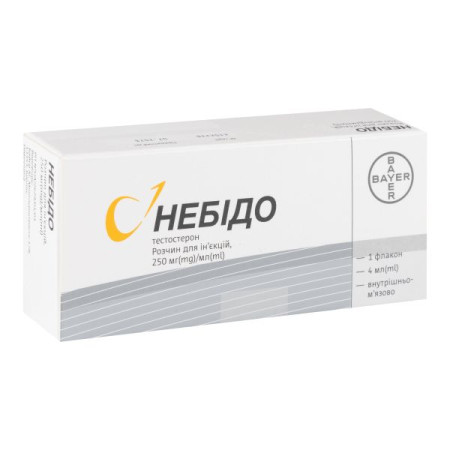Methoject 7.5 mg solution for injection 50 mg/ml syringe 0.15 ml No. 1

Solution for injection "Metoject" is indicated for: active form of rheumatoid arthritis in adults; polyarthritic severe form of juvenile (idiopathic) arthritis in case of inadequate response to nonsteroidal anti-inflammatory drugs; severe form of psoriasis, especially in the form of plaques, in case of ineffectiveness of appropriate therapy, such as phototherapy, PUVA therapy and the use of retinoids, as well as in case of severe form of psoriatic arthritis in adults.
Composition
1 ml of solution contains 50 mg of methotrexate (as methotrexate sodium - 54.84 mg).
Excipients: sodium hydroxide, sodium chloride, water for injections.
Contraindication
Hypersensitivity to methotrexate or to any of the components; hepatic insufficiency; alcohol abuse; severe renal insufficiency (creatinine clearance less than 20 ml/minute); history of blood diseases, such as bone marrow hypoplasia, leukopenia, thrombocytopenia or severe anemia; severe acute or chronic infections, such as tuberculosis and HIV, or other immunodeficiency syndromes; oral ulcers and active gastric or intestinal ulcers; concomitant vaccination with live vaccines.Method of application
Only doctors who are familiar with all the features of this drug and its mechanism of action should prescribe methotrexate. Methoject should be administered once a week.
The patient should be clearly informed that the drug should be administered once a week. It is advisable to establish a fixed day of the week as the day of injection.
This dosage form is intended for single use only.
Methoject solution for injection can be administered intramuscularly, intravenously or subcutaneously (for children and adolescents, only subcutaneous or intramuscular injections are used).
The duration of the treatment course is determined by the doctor.
When changing from oral to parenteral administration, a reduction in the dose of methotrexate may be necessary due to different bioavailability with different routes of administration.
Adding folic acid to the current treatment regimen may be considered.
Adult patients with rheumatoid arthritis.
The recommended initial dose is 7.5 mg of methotrexate, administered subcutaneously, intramuscularly or intravenously once a week. Depending on the specific course of the disease and tolerability of the drug, the initial dose can be gradually increased by 2.5 mg per week. The maximum weekly dose of 25 mg should not be exceeded. Also, doses exceeding 20 mg/week may be accompanied by a significant increase in toxicity, especially bone marrow suppression. Usually, a response to treatment can be expected after about 4-8 weeks. After achieving a therapeutic effect, the dose should be gradually reduced to the minimum effective maintenance dose.
Children under the age of 16 years with polyarthritis in the form of juvenile (idiopathic) arthritis.
The recommended dose is 10-15 mg/m2 of body surface area/week. In case of insufficient effect, the weekly dose can be increased to 20 mg/m2 of body surface area/week. Due to the lack of reliable information on the intravenous use of this drug in this group of patients, methotrexate should be administered subcutaneously or intramuscularly.
This group of patients should be treated under the supervision of a rheumatologist who has experience working with children and adolescents.
Patients with psoriasis vulgaris and psoriatic arthritis.
It is recommended to administer a parenteral test dose of 5-10 mg one week before starting treatment in order to detect idiosyncratic adverse reactions. The recommended initial dose is 7.5 mg of methotrexate administered subcutaneously, intramuscularly or intravenously once a week. The dose should be increased gradually, but the maximum weekly dose of methotrexate of 25 mg should not be exceeded. Doses exceeding 20 mg/week may be accompanied by a significant increase in toxicity, especially bone marrow suppression. Usually, a response to treatment can be expected after about 2-6 weeks. After achieving a therapeutic effect, the dose should be gradually reduced to the lowest possible effective maintenance dose.
Application features
Pregnancy
Studies have shown the teratogenic effect of methotrexate (the drug caused fetal death and/or congenital malformations, especially when used in the first trimester of pregnancy), so it should not be used during pregnancy.
Men and women of reproductive age should use reliable methods of contraception during treatment with methotrexate and for at least 6 months after treatment.
If a female patient or the partner of a male patient treated with methotrexate nevertheless becomes pregnant, it is necessary to consult specialists regarding the risk of adverse effects of methotrexate on the fetus.
Methotrexate passes into breast milk in concentrations that pose a risk to the child, so breastfeeding should be discontinued before and during treatment.
Thus, methotrexate is contraindicated during pregnancy or breastfeeding.
Children
Children and adolescents are given only subcutaneous or intramuscular injections.
Methotrexate is not recommended for use in children under 3 years of age due to a lack of sufficient information on efficacy and safety.
During treatment with this solution, you should refrain from driving or operating machinery, as side effects from the nervous system (fatigue and dizziness) may occur.
Overdose
The toxicity of methotrexate is mainly directed at the hematopoietic system.
Side effects
The most significant adverse reactions are inhibition of hematopoiesis and gastrointestinal disorders.
Storage conditions
Store the pre-filled syringe at a temperature not exceeding 25 °C, out of the reach of children, in the original packaging to protect from light.
Shelf life - 2 years.
There are no reviews for this product.
There are no reviews for this product, be the first to leave your review.
No questions about this product, be the first and ask your question.







